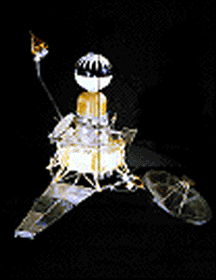Image of Ranger 3 spacecraft
NASA/Space Science Data Center
Ranger
The goal of the seven Ranger missions was to obtain the first close-up U.S. pictures of the Moon. Each spacecraft was to fly straight down to the Moon's surface and return photographs until crashing.
Only the Ranger 7, 8, and 9 missions were successful, each returning thousands of photographs of the lunar surface. The photos were very high quality, with detail 1000 times better than that of Earth-based observations. Neither Ranger 3 or 5 were able to impact the Moon, while Rangers 4 and 6 reached its surface but didn't return any images.
The Ranger missions were useful for the planners of the Surveyor and Apollo programs, showing them that a safe landing site on the Moon would be hard to find.
You might also be interested in:
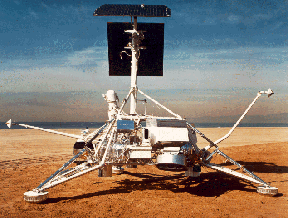
The Surveyor missions of 1966 through 1968 were the next step in space travel to the Moon, following the Ranger missions. Their goal was to perform "soft" landings on the lunar surface, meaning that the
...more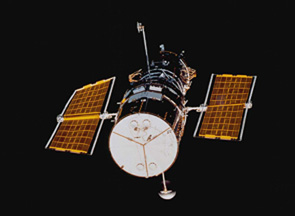
The Hubble Space Telescope (HST) is really neat! It was first launched in 1990, but scientists started building it in the 1970's! We have found all kinds of objects like stars, nebulae and galaxies. The
...more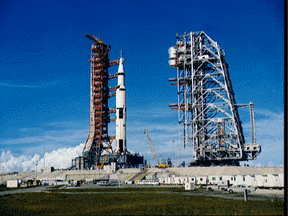
Apollo 11 was the first mission that landed a person on the moon. On July 16, 1969, the U. S. rocket Saturn 5 was launched carrying the lunar landing module Eagle. The Eagle was released and it reached
...more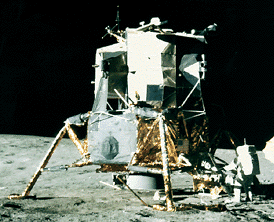
Apollo 12 was launched on Nov. 14, 1969 and arrived at the Moon three days later. Astronauts Charles Conrad and Alan Bean descended to its surface, while Richard Gordon remained in lunar orbit aboard the
...more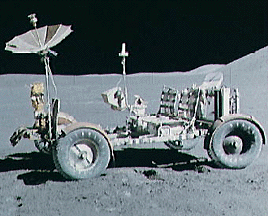
Apollo 15 marked the start of a new series of missions from the Apollo space program, each capable of exploring more lunar terrain than ever before. Launched on July 26, 1971, Apollo 15 reached the Moon
...more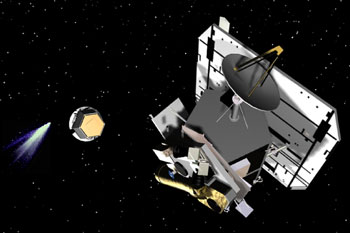
NASA chose Deep Impact to be part of a special series called the Discovery Program. This program is for cheap, scientific projects. In May 2001, NASA said it was ok to start with mission development for
...more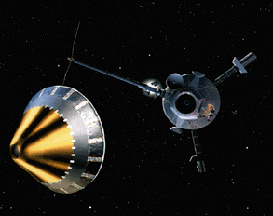
Galileo was a spacecraft that orbited Jupiter for eight years. It made many discoveries about Jupiter and its moons. Galileo was launched in 1989, and reached Jupiter in 1995. The spacecraft had two parts.
...more
